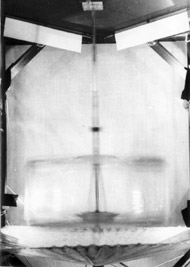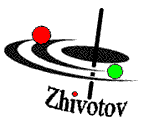 |
Welcome to the New Theory of Rotor Dynamics© and Inertial Mechanics© |
Attention! Our site is placed to the address |
The
Great Beal's Conjecture - The Last Fermat's Theorem ![]()
(proof)
MATHEMATICAL JOURNALS and GREAT BEAL'S CONJECTURE - FERMAT'S LAST THEOREM
|
|
![]() New Scientific Paper of Rotor Dynamics, June 18-21, 2007
New Scientific Paper of Rotor Dynamics, June 18-21, 2007
New Theory of Rotor Dynamics: Dynamics of Jeffcott Rotor with Moment Unbalance
|
![]() Scientific Paper of Rotor Dynamics, 25-28 September 2006
Scientific Paper of Rotor Dynamics, 25-28 September 2006
Dynamics of Vertical Rotor with Arbitrary Arrangement of Static and Moment Unbalances
Presentation
of a scientific paper on twelfth INTERNATIONAL SCIENTIFIC TECHNICAL CONFERENCE Dynamics
of an Outboard Rotor with a Quasi - Static Unbalance Papers about evolution Inertial Mechanics and New Theory
of Rotor Dynamics Inertial Mechanics: Base Laws of
Rotational Motion of a Free Body; (PDF, 2005, July 4)
Base Laws of Translation Motion of a Body (PDF, 2005); The
Bounded Rotational and Translation Motion of a Body (a Material Point as Physical
Point) on a Circle;
(PDF, 2005, July 4)
Problems in Classical Mechanics
(2005). New Theory of Rotor Dynamics: Disk Rotor Dynamics with
Static Unbalance (PDF, 2002); Disk Rotor Dynamics with
Static Unbalance Taking into Account Aerodynamic Drag Forces (PDF); Rotor Dynamics with Moment
Unbalance (PDF, 2003); Dynamics
of Umbrella-Type Rotor with Flexible Support (ISCORMA-2). For engineers and experts on vibration of machines: Autobalancing
(equilibration) of Centrifuges Rotors. Alexandr Zhivotov Alexandr Zhivotov PRESENTS: Rotor
Dynamics©; Other helpful information about the New
Inertial Theory of Rotor Dynamics is on site: www.newrotor.narod.ru
![]()
![]()
![]() New Scientific Paper of Rotor Dynamics (2006)
New Scientific Paper of Rotor Dynamics (2006)![]()
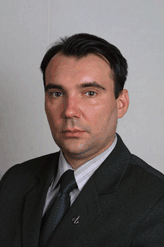
![]() Inertial Mechanics©;
Inertial Mechanics©;![]() New Theory of
New Theory of 



![]()
![]()
![]()
![]()
![]() The site is created: May, 16, 2002. The site is regularly updated! Last
updating of a site: April, 08, 2009. This site will be useful to everyone
who works in the field of rotor dynamics. First of all, the site is created
for engineers who project and serve rotors of the machines. Site also
represents the big interest for students, post-graduate students and young
scientists. For you we have created the correct, clear and simple theory
and suggest you to take part in her development. This theory will open
for you real opportunities and new prospects.
The site is created: May, 16, 2002. The site is regularly updated! Last
updating of a site: April, 08, 2009. This site will be useful to everyone
who works in the field of rotor dynamics. First of all, the site is created
for engineers who project and serve rotors of the machines. Site also
represents the big interest for students, post-graduate students and young
scientists. For you we have created the correct, clear and simple theory
and suggest you to take part in her development. This theory will open
for you real opportunities and new prospects.
|
Static Unbalance of a rotor
Self-centering |
Moment Unbalance of a rotor
Self-centering |
Balance of a rotor!
|
Any course of Physics or Engineering Mechanics includes Dynamics of Rigid Body, because the dynamics plays an important role in manufacturing engineering. General merits of basis dynamics creation belong to Galileo Galilei and Isaac Newton.
Euler, d'Alamber and Lagrange played a general role in development of analytic methods of body dynamics study using differential and integral calculus.
Founders of analytic methods considered the dynamics issues of absolutely rigid body rotation in absolutely rigid supports. Also, they studied the rigid body motion about fixed point and rotation of free body.
An approximate theory of gyroscopic effects appeared far later. However, appearance of gyroscope approximate theory based on dynamics of rigid body motion about a support point showed that dynamics problems are more complicated than motion founders of the analytic methods had been studied.
Experimentally detected rotor deflection from the rotation axis beginning from some speeds delivered a heavy blow to understanding of gyrodynamics.
The classical dynamics theory turns out to be verdant to resonance and rotor self-alignment effects. Unavailability of acceptable theory and insufficient analysis of the gyro-process physics resulted in vibration theory application to study the rotor dynamics.
In 1869, Renkin pioneered the analysis of "vibration" motion of the flexible shaft with rotor. Since then, the rotor dynamics became a part of vibration theory and a proving ground to use the fundamental equations of vibration theory. Over the all time, the vibration theory equations tailored artificially to describe the rotor dynamics, even to the detriment of the process physics.
The terms used in the literature reflected superior role of the vibration theory. So, the rotor dynamics had been considering as "bending vibrations of flexible rotors". Due to vagueness of the process physics, the Lagrange method found a wide application in the vibration theory of the rotor dynamics. On of Lagrange method advantages is an opportunity of mechanical approach to problems.
However, the Lagrange method provides solutions even if initial data are erroneous. Certainly, high-scale application of the vibration theory to solve inappropriate problems could not provide a positive result. When the fundamental equation of the rigid rotor dynamics on flexible shaft is examined carefully, it is clear that these equations are erroneous (see the critical review of rotor dynamics "vibration" theory). It is unlikely that study used erroneous equations is true.
We turned back to origins of Physics and Engineering Mechanics and attempted to find what fell within the view of Newton, Euler and Lagrange during gyrodynamics study.
We discovered vary important feature and created new "inertial" theory of the rotor dynamics. Ground of the "inertial" theory is new hypothesis and proper understanding of the process physics. The theory provides construction of the acting forces diagram according to requirements of the classical physics and engineering mechanics. Possibility of error reduces to zero and is easy to check by comprehensive analysis of the diagram of acting forces.
New "inertial" theory exists already and solves successfully the rotor dynamics issues. The "vibration" theory would be applied within the "inertial" theory as means to solve the typical problems dedicated to the vibration.
If classical physics and engineering mechanics include Newton-created dynamics theory of rigid body in rigid supports, so "inertial" theory is a further development of the classical theory of rotor dynamics in case of rotor or shaft is not a rigid body.
New insight into physics of the rotating body impelled us temporarily refusing differential and integral calculus, and we took successfully a short at solving most problems of dynamics using algebraic equations including Newton's forces and moments.
This is not a backward step of mathematics, but forward step of physics. We are just aware that most progressive methods of the mathematical analysis lead to no positive results without sharply defined and accurate selected initial data.
Just our understanding of gyrodynamics we attempt to present in our studies, using as simple mathematical tool as possible. It is a satisfaction to note that most of gyrodynamics issues are solved by means of algebraic equations of no more than third-order. Such is indeed the example how important to correct insight into the process from the physics point of view.
Therefore, our "inertial theory" is comprehensible to anyone.
 |
Round-table discussion of Yuriy Zhivotov |
 |
What do you think regarding this? |
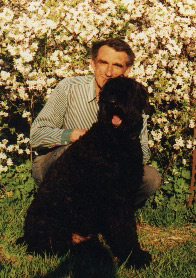 |
About the New Theory of Rotor Dynamics. | ||
|
About difference between Natural Frequency and Resonance Frequency. |
|||
| About "Viscous" friction. | |||
| About Resonance. | |||
| Reasons for the "New Theory..." creation. | |||
| Review "vibration" theory of rotor dynamics. | |||
| Issue of research study financing. | |||
|
Yuriy G. Zhivotov and his favourite dog "Russian black terrier" on a nickname "Skif" |
 |
RESULTS
of
the First Stage 2000 - 2003
|
![]() Rotation of bodies with the variable moments of inertia
Rotation of bodies with the variable moments of inertia
We ask to excuse us for a delay of preparation of "Results". A small vacation was very useful.
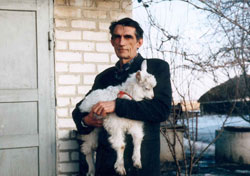 |
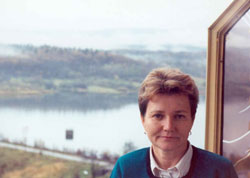 |
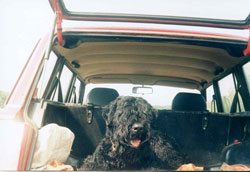 |
|
"Another's"? Do not approach!
Dear colleagues! Has passed three years as the new inertial theory of dynamics of a rotor became accessible to foreign scientists and experts. Six scientific papers have been (in English) offered to scientists for discussion at international conference IFToMM on dynamics of rotors (Sydney - 2002), on an international symposium "ISCORMA-2" (Gdansk - 2003) and on congress IFToMM - 2003.
Huge on volume the scientific material is submitted in scientific papers in the compressed concise form. The material will bring in updating to bases of such sciences, as: Physics, Theoretical mechanics, the Theory of machines and mechanisms, Dynamics of machines, the Theory of a gyroscope, the Rotor dynamics. Carried out scientific researches supplement existing understanding of rotary motion of material points, rotary motion of bodies, give new understanding of rotation of bodies with variable inertia moments.
Acceleration of Coriolis has received an explanation from the point of view of physics. Eller's classical problem about rotation of a body with one point of a support is solved. Bases for creation of new technologies of balancing of rotors are submitted. Circumstances, which have not been noticed by such scientists, as Newton, Eller, Lagrange, underlie researches.
Circumstances have essentially changed representation about rotation of bodies, and words " the New theory " has appeared in our scientific papers. We are convinced, that the classical mechanics comes in new stage. All directions of mechanics will be updated.
There has stepped time when Everyone should reflect on change of curriculums in average and higher educational institutions. Education, which receives youth, should be correct and correspond to modern fundamental (academic) achievements in a science.
Past three years have been allocated on acquaintance of the scientific world with some our researches. It is the first stage. At this stage we aspired to show position of a body concerning a motionless point or a motionless axis at rotary motion. We aspired to give the general method of the solution of similar problems. The first stage has ended. In this connection we bring results of our external activity and the first reaction of the scientific world to our researches.
![]() We have prepared the first scientific paper "New Theory of Rotors
Dynamics: Disk Rotor Dynamics with Static Unbalance" to take
part in work IFToMM Sixth International Conference
on Rotor Dynamics. Comments of reviewers were sad. Two reviewers
from three reviewers gave a negative response on a scientific paper without
any comment. The solution on the publication of the abstract of a scientific
paper was accepted. The foreign audience has remained without the full
text of a scientific paper.
We have prepared the first scientific paper "New Theory of Rotors
Dynamics: Disk Rotor Dynamics with Static Unbalance" to take
part in work IFToMM Sixth International Conference
on Rotor Dynamics. Comments of reviewers were sad. Two reviewers
from three reviewers gave a negative response on a scientific paper without
any comment. The solution on the publication of the abstract of a scientific
paper was accepted. The foreign audience has remained without the full
text of a scientific paper.
Today we consider, that organizers of conference and the critical review of scientific papers have exerted high moral qualities and courage when have made the solution on the publication of the resume in the collection of works of conference at existence of two negative reviews.
We compensated information famine by means of the publication of the full text of a scientific paper on this Site.
![]() We have prepared two scientific papers to take part in work The
11th World Congress in Mechanism and Machine Science (IFToMM 2003):
"New Theory of Rotor Dynamics: Disk Rotor Dynamics with Static
Unbalance Taking info Account Aerodynamic Drag Forces";"New
Theory of Rotor Dynamics: Rotor Dynamics with Moment Unbalance".
We have prepared two scientific papers to take part in work The
11th World Congress in Mechanism and Machine Science (IFToMM 2003):
"New Theory of Rotor Dynamics: Disk Rotor Dynamics with Static
Unbalance Taking info Account Aerodynamic Drag Forces";"New
Theory of Rotor Dynamics: Rotor Dynamics with Moment Unbalance".
We have been amazed, when IFToMM has made possible and impossible steps for isolation of our scientific papers from a foreign audience (We have in detail enough published correspondence on this question on the Site).
We hope, that CHAIR OF THE TECHNICAL COMMITTEE ON ROTOR DYNAMICS Dr. Neville F. Rieger in the survey report will inform about existence of the new theory of a rotor dynamics and will consider and will assess the new inertial theory of a rotor dynamics.
![]() At
last, we have prepared three scientific papers for participation in symposium
ISCORMA-2: "New Theory of Rotor Dynamics:
Dynamics of a Rotor Having Hinge Support and Elastic Support";
"New Theory of Rotor Dynamics: Dynamics of Umbrella-Type Rotor
with Flexible Support "; "New Theory of Rotor Dynamics:
Dynamics of Vertically Suspended Rotor ". The general method
of the solution of problems of dynamics is the important advantage of
the new inertial theory.
At
last, we have prepared three scientific papers for participation in symposium
ISCORMA-2: "New Theory of Rotor Dynamics:
Dynamics of a Rotor Having Hinge Support and Elastic Support";
"New Theory of Rotor Dynamics: Dynamics of Umbrella-Type Rotor
with Flexible Support "; "New Theory of Rotor Dynamics:
Dynamics of Vertically Suspended Rotor ". The general method
of the solution of problems of dynamics is the important advantage of
the new inertial theory.
However, the general method has played a negative role. Organizers of a symposium have allowed us to make presentation only one scientific paper ("New Theory of Rotor Dynamics: Dynamics of Umbrella-Type Rotor with Flexible Support").
They have explained to us, that we have operated the general method at the solution of other problems of a rotor dynamics. Therefore it is not meaningful to publish solutions of other problems (for example, dynamics of an overhand rotor).
In a result the foreign audience could not familiarize with two scientific papers. We emphasize, that foreign scientists have suffered first of all.
We have received indemnification for "loss" of two other reports as friendly discussion of a scientific paper.
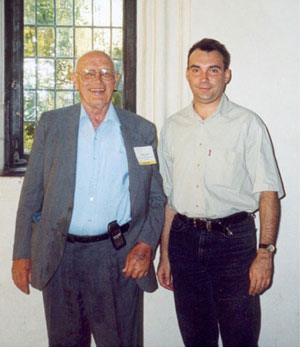
The founder of the new inertial theory of rotation of a body with variable inertia moments A. Zhivotov and the legendary theorist of vibrating theory Donald E. Bently. Different views on the theory of a rotor dynamics are not a handicap for dialogue.
1. All six scientific
papers have passed the critical review. Reviewers, who considered scientific
papers, have not found mistakes in our inertial theory of a rotor dynamics.
More than 2400 scientists and experts have familiarized with the first
scientific paper, which has been published on our Site in full. Scientists
and experts also have not found out mistakes in the new theory of a rotor
dynamics.
Participants of symposium ISCORMA-2 had an opportunity to discuss the
new inertial theory with the author of this theory. These conversations
have not revealed lacks of the new theory also. Detailed discussion of
the new theory and of the vibrating theory of a rotor dynamics occurred
in a debatable zone of known vibrating institute. Circumstance of this
discussion was that participants of discussion could act under assumed
names and state any point of view without loss of authority. Discussion
also has not revealed lacks in of the new inertial theory. We have received
series of positive comments from independent scientists. We also have
been pleasantly surprised with a scientific paper in which authors have
returned to idea about use of rotating coordinate system for the analysis
of a rotor dynamics. Authors of this paper have noted influence of elastic
coupling on model of a rotor rotation. In our opinion, authors of a scientific
paper also consider, that the average line of a shaft rotates around of
a rotation axis, and the rotor turns around of a geometrical axis. Authors
of this scientific paper have confirmed, that with increase in amplitude
of sag of a shaft for a rotor rotation it is necessary to increase a torque.
It is elements of our inertial theory of a rotor dynamics. However we confirm, that These circumstances of a rotor dynamics are incompatible with the vibrating theory. Scientific magazines have suggested publishing our scientific papers. In our opinion it confirms a scientific solvency of the inertial theory of a rotor dynamics.
2. We have worked hard, that our scientific researches became available to foreign scientists. We bore expenses, which exceeded our incomes in the basic place of work. Despite of our the efforts, only one scientific article from six scientific papers has been published in the foreign official collection in English. Other five scientific papers have not reached a foreign audience because of opinions of reviewers which "have overlooked" to prove these opinions. It is very low efficiency. We do all necessary for correction of a situation.
Now translation quality of scientific articles on the English language is checked. All six scientific papers become available to foreign experts and scientists in the near future. In a stage of end there is a monograph in which the complex of questions on dynamics and balancing of a disk rotor will be stated. We reflect on necessity of creation of courses on studying a new rotor dynamics.
However we are going to change our economic policy and to refuse gratuitous transfer of the scientific information in English. We had an impression, that some scientists underestimate our information, as it is gratuitous. Moreover, we carry charges to acquaint all with the new theory. Therefore the opinion can be created, that we thrust the unnecessary theory. We wish scientists who think thus, to not get in outsiders.
3. Some scientists ask us. What problems the new theory can solve, which have not been solved with the help of the vibrating theory? Such question is not correct. We declare, that the vibrating theory of a rotor dynamics has not solved correctly any problem. In the scientific papers we already gave the solution of some important problems with the help of the inertial theory.
In our opinion more correct the question would be. Whether it is possible to apply the inertial theory to the solution of practical problems? We answer this question. In part Yes. For wide application of the theory it is necessary to get acquainted with our third basic equation of a rotor dynamics. It is possible to create new ways of balancing of rotors, it is possible to create new diagnostic programs, it is possible to learn to define precisely reactions of support if our third basic equation of a rotor dynamics will be known.
We prepare for such scientific paper for presentation at the international conference. We are always ready for teamwork on practical application of the new theory if you will make such offer. We wait for your offers.
We ask you to support our projects, which we shall prepare for The Science and Technology Center in Ukraine. We hope to get from them financial support. We hope to receive from you such letters. We wait for your letters.
4. Some scientists ask us. In what novelty of the inertial theory will consist? Others declare, that we have deformed the vibrating theory of a rotor dynamics. We hope, that these second scientists can explain the first scientists of the cause who have caused in them negative opinion. The answer to a question on novelty of new theory A. Zhivotov has given repeatedly in the report, which has been read on symposium ISCORMA - 2. The quotation from the report below is resulted.
![]() 1.Rotor-suspender (rotor-bearing) system deflection
results in inertial properties changes of general system. We consider
these changes as disturbing factor opposing the rotor rotation.
1.Rotor-suspender (rotor-bearing) system deflection
results in inertial properties changes of general system. We consider
these changes as disturbing factor opposing the rotor rotation.
![]() 2.To overcome the disturbing factor it is need
to apply an additional torque.
2.To overcome the disturbing factor it is need
to apply an additional torque.
![]() 3.The rotor-bearings system has constraint of rotation
and geometrical axes by means of the rotor shaft. The rotor and
all its points rotate about the rotation axis with equal angular velocity.
However, the shaft deflection results in appearance of system
additional degree of freedom allowing turn of the rotor about its
own geometrical axis.
3.The rotor-bearings system has constraint of rotation
and geometrical axes by means of the rotor shaft. The rotor and
all its points rotate about the rotation axis with equal angular velocity.
However, the shaft deflection results in appearance of system
additional degree of freedom allowing turn of the rotor about its
own geometrical axis.
![]() 4.We think that shaft longitudinal fibers bending stiffness factor (at
cross deflection) is significantly less than shaft fibers offsetting stiffness
factor.
4.We think that shaft longitudinal fibers bending stiffness factor (at
cross deflection) is significantly less than shaft fibers offsetting stiffness
factor.
![]() 5. The additional torque results in additional force moment. This force
moment is called additional inertial moment (accelerative
moment) as distinct from a moment of inertia. Additional
inertial moment (accelerative moment) (taking into account the
system additional degree of freedom) attempts to turn the rotor about
its geometrical axis in direction opposite to the rotor rotation.
5. The additional torque results in additional force moment. This force
moment is called additional inertial moment (accelerative
moment) as distinct from a moment of inertia. Additional
inertial moment (accelerative moment) (taking into account the
system additional degree of freedom) attempts to turn the rotor about
its geometrical axis in direction opposite to the rotor rotation.
![]() 6. Also, we believe that rotor dynamics should be studied at rotating
coordinates.
6. Also, we believe that rotor dynamics should be studied at rotating
coordinates.
5. Questions of education of youth are very important questions from the economic point of view. We count, that universities should not train youth in erroneous theories. It is unprofitable for any state, as the state will be compelled to spend means to retrain youth for the new theory. Therefore we again address to the scientific world. We ask to find mistakes in the inertial theory of rotary motion or to recognize this theory.
6. Thus, the past stage has shown:
- scientists have not found out mistakes in the inertial theory
- interest to the new theory steadily increases, and
it will gradually obtain recognition.
There comes time to make a choice between inertial and vibrating theories
of a rotor dynamics.
The best regards,
Yu. Zhivotov
 |
Participation in International Scientific Conferences |
![]() XXVI International Readings on astronautic in memory of Academician
XXVI International Readings on astronautic in memory of Academician
S.P. Koroliov and other outstanding scientists - pioneers of space exploration.
February 27 to March 3, 2002, Moscow, Russia
| Scientific Report | Abstract (.pdf) |
Paper (.pdf) |
Correspondence (.pdf) |
| New Theory of Rotors Dynamics: Dynamics of the disk rotor fixed in support with nonlinear rigidity | Abstract |
Paper |
Letters, the review, response for scientific work |
![]() Sixth International Conference on Rotor Dynamics (IFToMM)
Sixth International Conference on Rotor Dynamics (IFToMM)
September 30 to October 3, 2002, Sydney, Australia
| Scientific Report | Abstract (.pdf) |
Paper (.pdf) |
Correspondence (.pdf) |
| New
Theory of Rotors Dynamics: Disk Rotor Dynamics with Static Unbalance |
Abstract | Paper | Letters, the review, response for scientific work |
![]() The 11th World Congress in Mechanism and Machine Science
The 11th World Congress in Mechanism and Machine Science
August 18-21, 2003, Tianjin, China
| Scientific Report | Abstract (.pdf) |
Paper (.pdf) |
Correspondence (.pdf) |
| New Theory of Rotor Dynamics: Disk Rotor Dynamics with Static Unbalance Taking info Account Aerodynamic Drag Forces | Abstract | Paper | Letters, the review, response for scientific work |
| New Theory of Rotor Dynamics: Rotor Dynamics with Moment Unbalance | Abstract | Paper | Letters, the review, response for scientific work |
![]() Second International Symposium on Stability Control of Rotating Machinery,
Second International Symposium on Stability Control of Rotating Machinery,
4-8 August, 2003, Gdansk, Poland
| Scientific Report | Abstract (.pdf) |
Paper (.pdf) |
Correspondence (.pdf) |
| New Theory of Rotor Dynamics: Dynamics of a Rotor Having Hinged Support and Elastic Support | Abstract |
Paper |
Letters, the review, response for scientific work |
| New Theory of Rotor Dynamics: Dynamics of Vertically Suspended Rotor | Abstract |
Paper | Letters, the review, response for scientific work |
| New Theory of Rotor Dynamics: Dynamics of a Rotor of "Umbrella" Type, with Elastic Support | Abstract |
Paper | Letters, the review, response for scientific work |
![]()
![]() IUTAM XXI International Congress of Theoretical and Applied Mechanics
IUTAM XXI International Congress of Theoretical and Applied Mechanics
15 - 21 August, 2004, Warsaw, Poland
| Scientific Report | Abstract (.pdf) |
Paper (.pdf) |
Correspondence (.pdf) |
|
New theory of rotor dynamics: The Equation of the Torque |
Abstract |
Paper |
Letters, the review, response for scientific work |
 |
IMPORTANT INFORMATION! |
![]() We are grateful to all who has answered our letters!
We are grateful to all who has answered our letters!
|
Kenneth J. Waldron Arthur W. Lees Eric Hahn Masaki Kitagawa Jorge Angeles Donald E. Bently Gordon Kirk E. Murphy Lawrence A. Bergman |
Jerzy Sawicki Jonathan Wickert Lyn Greenhill Tadeusz Burczynski |
Erik Swanson John Halkyard Teoman Uzkan |
George Rozvany |
![]() We plan participation in the following scientific
conferences:
We plan participation in the following scientific
conferences:
![]()
![]() IUTAM XXI International Congress of Theoretical
and
IUTAM XXI International Congress of Theoretical
and
Applied Mechanics 15 - 21 August 2004, Warsaw, Poland;
Paper: "New theory of rotor dynamics: the equation of the torque"
![]() Second International Symposium on Stability Control of
Second International Symposium on Stability Control of
Rotating Machinery, 4-8 August, 2003, Gdansk, Poland;
![]() The 11th World Congress in Mechanism and Machine
The 11th World Congress in Mechanism and Machine
Science August 18-21, 2003, Tianjin, China;
![]() IFToMM Sixth International Conference on Rotor Dynamics
IFToMM Sixth International Conference on Rotor Dynamics
September 30 to October 4, 2002 SYDNEY, AUSTRALIA
ATTENTION!
![]() Please contact Yu.G. Zhivotov on the issues connected with organization,
copyrights, copying of scientific articles, incorporation of scientific
articles into composite and educational books or other technical literature.
Please contact Yu.G. Zhivotov on the issues connected with organization,
copyrights, copying of scientific articles, incorporation of scientific
articles into composite and educational books or other technical literature.
 |
SCIENTIFIC ARTICLES |
![]() Scientific articles written in English.
Scientific articles written in English.
![]() New theory of rotor dynamics:
New theory of rotor dynamics:
1. Disk Rotor Dynamics with Static Unbalance. Abstract. Paper.
2. Disk Rotor Dynamics with Static Unbalance Taking into Account
Aerodynamic Drag Forces. Abstract. Paper.
3. Rotor Dynamics with Moment Unbalance. Abstract. Paper.
4. Dynamics of a Rotor Having Hinged Support and Elastic Support. Abstract. Paper.
5. Dynamics of Vertically Suspended Rotor. Abstract. Paper.
6. Dynamics of a Rotor of "Umbrella" Type, with Elastic Support. Abstract. Paper.
7. Disk Rotor Dynamics with Static Unbalance in Real-Life Environment. Abstract. Paper.
![]() Scientific articles written in Russian.
Scientific articles written in Russian.
![]() ͮ⠿ 迠䨭ନꨠ𮲮𠺦#060;/P>
ͮ⠿ 迠䨭ନꨠ𮲮𠺦#060;/P>
1.Ĩ���誠 䨱ꮢ 𮲮𠠱?���𠢭?. Abstract.(English)
2.Ĩ���誠 𮲮𠠍 쥭 ���𠢭?. Abstract.(English)
3.Ĩ���誠 䨱ꮢ 𮲮𠠯䥩嬠���跥⫥���. Abstract.(English)
4.Ĩ���誠 𮲮𠠍 ⠮ﮰൠ丨ﭨ꠬謠ठ?嫨������ 楱砢豿? 讠?겮
5.Ĩ���誠 𮲮𠠍 ⠮ﮰൠ丨ﭨ꠬謠ठ?嫨������ 楱砢豿? 孨鮠?겮
6.Ĩ���誠 䨱ꮢ 𮲮𠠱 ﰨ譸���頬?𮠦#060;A HREF="abstract1.html#ࡱ" CLASS="unnamed13">?겮
7.ʰ貨?襠 蠰𠠧ર寫孭 ⠳ﰳ㨵 𠵠蠢?ꮰ𥪶訠 䨱ᠫୱ?겮
8. Ĩ���誠 𮲮𠠧ર寫孭 ⠳ﰳ㮩 蠸భ谭𠵮 Abstract. (English).
9.Ĩ���誠 𮲮𠠍 箭 𭨰��� 蠳ﰳ㮩 𠬨. ?겮
10.Ĩ���誠 ⥰뼭帥���㮠𮲮𠮠?겮
11.Ĩ���誠 䨱ꮢ 𮲮𠠱 䨭ନ?���𠢭?. ?겮
12.Ĩ���誠 ?���跥𠠱 䨭ନ?���𠢭?. ?겮
13.Ȥ孲质꠶迠 (ᠫୱ谮⪠) 䨱ᠫୱ䨱ꮢ 𮲮𠮠?겮
14.Ȥ孲质꠶迠 (ᠫୱ谮⪠) 䨱ᠫୱ?���跥𠮠?겮
 |
CONTACT US |
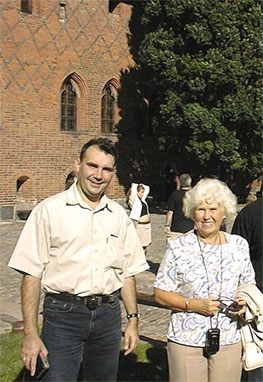 |
Alexandr Y. Zhivotov Yuriy G. Zhivotov
The post address: 17/1, Ordzhonikidze St., Dniepropetrovsk, 49063,
phone: +38 (0562) 92-50-11 +38 (056) 725-29-49
E-mail:
|
|
A. Zhivotov and Prof. Dr. Agnes Muszynska ISCORMA-2, Gdansk, Poland, August 2003. About Dr. Agnes Muszynska |
Joint-Stock Commercial Bank "Pivdencombank", Dnepropetrovsk, UKRAINE acc.: No 26207010106300 |



